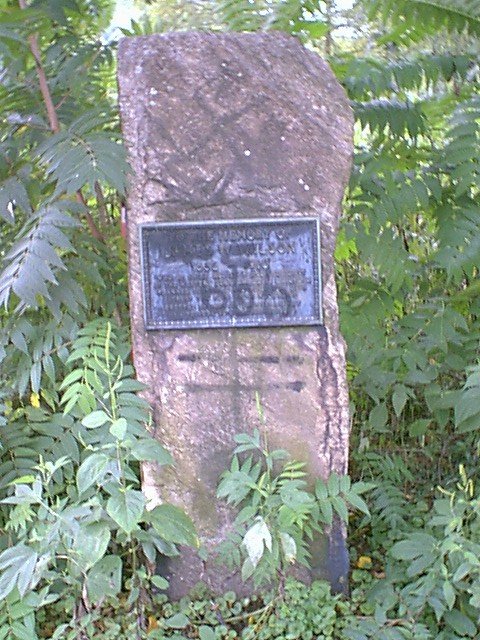|

THE FLOODS OF JULY, 1916
The lines of Southern Railway ' Company suffered
unprecedented damage from floods during the months of July and
August, 1916. On July 5th and 6th a tropical cyclone swept over
the Gulf Coast of Alabama, accompanied by high winds, reaching a
maximum of 107 miles per hour at Mobile on the fifth, and
followed by torrential rains over a large part of the State,
with somewhat lighter rains in eastern Tennessee and, the
Carolinas, greatly damaging Southern Railway waterfront property
at Mobile and interrupting traffic on the Company's lines in
Alabama south and west of Birmingham, by washing out trestles
and fills. A second tropical cyclone passed over Charleston, S.
C., during the morning of July 14th, causing some local damage,
and, moving northwestward, expended its full force on the
watersheds in western North Carolina where the rain from the
first storm had already saturated the soil and filled the
streams bank full. All previous 24 hour records of rainfall in
the United States were exceeded. The run off from the saturated
soil was very rapid, streams rose high above all previous flood
records; resulting in the death of about eighty persons and in
property damage estimated by the United States Weather Bureau at
about twenty two million dollars. The greatest single loss of
property was that of Southern Railway Company, as, without
taking into account the loss of traffic and the cost of
detouring trains, the total loss to the Company on account of
storm damage during the month of July is estimated at
approximately $1,250,000.
The Floods
of July 1916. How the Southern Railway met an emergency." by
Southern Railway Company printed by The Overmountain Press.
 Mr. Gatlin and his assistants on the job.
Sunday, August 27. First train to pass after repairs were
completed.
Mr. Gatlin and his assistants on the job.
Sunday, August 27. First train to pass after repairs were
completed.
THE
CONQUEST OF ROUND KNOB.
(Charlotte
(N. C.) Observer, August 18, 1916.)
An example of the
extraordinary in railroad reconstruction is to be witnessed at
the present time between Old Fort and Ridgecrest on the western
division of the Southern. Between these two points it is less
than five miles air line, but following the windings of the
picturesque line around and over the mountains the distance is
14 miles. Every mile of this has to be reconstructed. At some
points it has been found necessary to relocate the roadbed and
when service is resumed the trains will be carried over a route
that is new in some sections. The Southern construction
management has been calling for as many laborers as could be
secured. At last accounts there were over 3,000 men at work, and
it was expected that by the end of the present week this number
would be increased to 4000. The "hands" are divided into squads
covering every foot of the line from the small tunnel at the
foot of the mountains to the famed Swannanoa at the crest. It is
the expectation of the railroad men that this section of the
line will be put in condition for the operation of trains by
September 15th, but to that portion of the public familiar with
the character of the undertaking no disappointment will be
manifested in case this expectation fails of fulfillment. The
rebuilding of the line to North Wilkesboro was child's play
compared to the rebuilding, of the line up the mountains from
Old Fort to Ridgecrest. At the time the Western North Carolina
road was completed it was regarded as the marvel of railroad
engineering in the United States. Since then there have been
many feats in conquering the mountains by railroad engineers
notably in the case of the Clinchfield road but the Round Knob
engineering yet stands among the greatest achievements in the
railroad history of this country. The seemingly impossible feat
of running a railroad across the Blue Ridge at this point was
accomplished by native talent. Major J. W. Wilson was the
engineer and guiding genius. Colonel A. B. Andrews' efficient
part in the undertaking has been commemorated in the
construction of the Andrews Geyser, an aquatic wonder of the
mountains, but Major Wilson's memory lives only in the almost
forgotten history of his accomplishment. In the rehabilitation
of this wonderful Round Knob line, it might be well for the
Southern to establish at some point a token that would keep
Major Wilson's name before the public. Some conspicuous boulder
might be converted into a Wilson monument.
New Information:
Terry Wilson of Old Fort
Elementary School, was kind enough to tell us where a memorial
to Major Wilson was located, one mile from Hwy 70 on Mill Creek
Road. The Ruritan Club of Old Fort has agreed to clean the
monument which has been defaced and overgrown. We will keep you
up to date on this project. The monument will now be moved to
the depot after the renovation is completed, it will be a fine
addition to our town.


|





